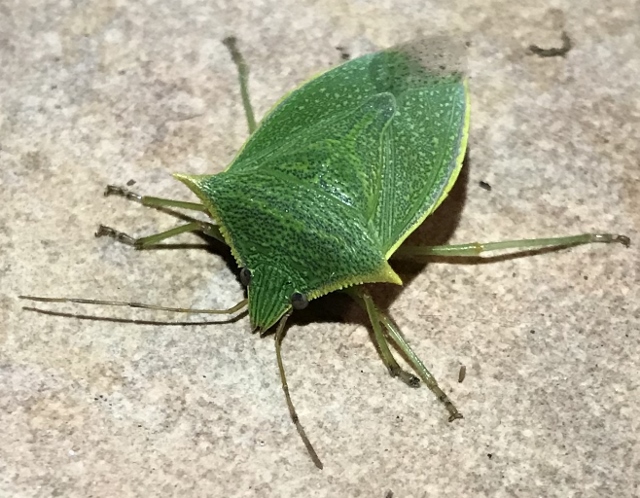
Story and photos by Anita Westervelt
Ever wonder what it’s like to be an insect? Let’s begin at the break of dawn, that diaphanous time when the earth is pitch black with but a hint of translucent pink on the horizon.

Just before this magical time, butterflies, moths, cicadas and other winged creatures begin breaking out from their final larval stage. As dawn creeps in, insects cling to inanimate objects, pumping life-fluids through their bodies as they wait for the rising sun to dry their wings in preparation for their very first flight.
Meanwhile, native plants burst open as daybreak nears. Passion vines, their exotic looking flowers attracting bees, beetles and flies to their pollen during the morning, find their blooms already closing by noon.

At dawn, moth and butterfly caterpillars munch away at the top of leafy green plants throughout the garden — until the clamor of awakening birds forces them into hiding to continue eating in relative safety.
As pollinators locate the best pollen, nocturnal reptiles, like the Gulf Coast toad, that have been busy eating insects all night long, are ready to find a secure clump of cool vegetative camouflage to spend the day, out of harm’s way.

The scorching noonday sun finds butterflies hitting the nectar field, congregating at the plants with the highest nectar, like fall-blooming mist flower, scorpion tail and the orchid-like blooms of a goat’s foot tree.
Lizards scurry and leap, seeking stink bugs, butterflies, caterpillars and red harvester ants. Dragonflies grasp branch tips, clinging in the wind while they recharge. As the afternoon heats up, mockingbirds, green jays, kiskadees, phoebes and other birds that eat on the wing begin quieting down, making the airways seem safer after a morning of active feeding.
As the heat of the day drifts toward eventide, esperanza flowers close while Berlandier’s trumpets open like clockwork at 4 p.m., ready for the night crew of moth pollinators.

Then, into the gloaming, that poetic time just before dusk, the parade of crepuscular animals begins to stir. Owls, nighthawks and bats begin hawking for insects while terrestrial animals like opossums, raccoons, skunks and armadillos scavenge for the very insects and caterpillars admired during the day.
Later, in the inky dark of the night, orbweavers spin elaborate webs to tangle unlucky insects in the sticky strands. Green stink bugs launch from plant to plant eating leaves of shrubs, vines, trees and cultivated crops.

As night creeps toward a new dawn, a peculiar-looking Texas bow-legged bug looks like it could mount a large green stink bug, dig in its spurs and ride off into the approaching sunrise after feeding on succulents and seed pods of legumes and milkweeds.

Insects, whether pretty or not, help sustain a world of nature. A four-foot square area of layered native plants can help make a difference in attracting insect diversity. Consider keeping fall leaf litter for shelter for moths and other insects that go through their last pre-adult stage near the ground, under leaf debris, burrowed into the soil or under rocks.

